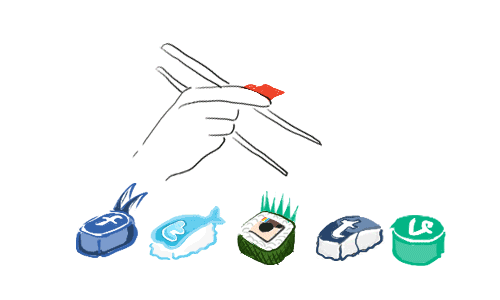If you are in the marketing sector or business development there’s a high chance you may have had conflicting thoughts on where to promote, how much money you need and how to get started. The cheeky answer is to tell you to always use Vivus ads! (cause we built it) but we know that’s not always the case so this article aims to highlight the key differences between the big giants’ Facebook, Google Adword, Twitter and Vivus ads and at least give you an idea of where to start.
Facebook ad
It’s only logical to start with the largest social network out there, Facebook. Facebook has come a long way since its initial release and is currently one of the most advanced ways of advertising. There are several reasons to use Facebook promotion, the obvious reason is due to its large user base. Other reasons include:
- Its advance targeting feature: Gives you the chance to advertise by age group, profession, interest, geographical location and so much more.
- Relatively low cost.
In advertisement lingo, it’s low CPC, CPM and potentially high ROI so with all that buzz we had to test it out ourselves.

- Checkmate Vivus Facebook ad
The above proves that Facebook is an effective way to get your brand out there but it has a slight problem
- Less engagement due to its declining active users and high competition.
- Fewer clicks: Over 80% of users said they either rarely or never click Facebook ads.
But hold on! Don’t rule it out just yet.
Why? You may ask. Well besides the type of ad, format, location or audience there’s something that plays a huge role in how customers engage with your ad. Your type of business! Specifically, are you B2B or B2C? It’s a proven concept that B2C customers generally get better engagement than B2C customers e.g you won’t expect to get the same engagement if you were advertising a discount on clothes, food or concert tickets compared to selling a piece of industrial equipment but one of the deciding factor for you should be, on average how much you get back per click or engagement. A good alternative for B2B is Linkedin.
Twitter ad
Its user base is comparatively low to Facebook. To make up for this, maybe out of sheer luck or good planning Twitter has been able to build a community. Now rather than the usual close relationship most social networks provide Twitter allows its users to follow up on their interests, celebrities and trends hence the chance to get more engagement.
[bctt tweet=” Its user base is comparatively low to Facebook. To make up for this, maybe out of sheer luck or good planning Twitter has been able to build a community.”]
As seen from a recent Twitter ad.
Checkmate Vivus Twitter ad
Unfortunately even with this Twitter seems comparatively more expensive with its cost per click and lacks in impressions compared to other forms of advertising such as Facebook.
Google Adword
Adword is the world’s largest and one of the most popular forms of PPC advertising beating the likes of Facebook and Twitter by a reasonable margin. It focuses on paid search, phrase or keyword in the hopes of customers finding your brand along with their search results.
Merits of Using google adword include:
- It’s high CTR and CPM.
- Low CPC compared to the likes of Twitter (depending on the industry).
- Potential High ROI.
Checkmate Vivus Google ad
With its high CTR, It’s no surprise this ad generated more sign-ups in the B2B sector than any other advertising platform but lacked any form of engagement. This form of advertising is best suited for businesses in the B-2-B industry.
Vivus Ad
It won’t be the same (or probably exist) if we did not talk about Vivus create, this service is comparably new compared to other ad services but let’s look at why this form of ad exists in the first place.
Sponsorship is one of the fastest-growing forms of marketing in the U.S with companies such as Coca-Cola utilizing this form of advertising to increase their credibility, image, prestige, customer feel-good factor and reach their target audience. How does Vivus enable this?
[bctt tweet=”Vivus allows brands to utilise organisers existing channels e.g social media, email, flyers as well as materials for the event e.g banners, badge holders, display computers and the likes”]
This way advertisers have the opportunity to reach a larger audience, tap into the referral marketing at a reasonably low cost and increase brand awareness. An example of a Vivus ad is shown below.
Checkmate Vivus Facebook ad
From this, Vivus seems like a reasonable option when:
- Trying to reach a large audience.
- Getting ROI.
- Low cost per thousand impressions (CPM).
- Possible referral.
Summary
In the large sense, all these platforms are generally positioned as competitors but nothing can be further from the truth. Each advertising channel plays a crucial role in your business. You can tap into existing channels by allowing users to find you when searching for your product or service using Adword, create brand awareness using Facebook and acquire new customers or maintain a good public image using Vivus ads.
[bctt tweet="You can tap into existing channels by allowing users find you when searching for your product or service using Adword, create brand awareness using Facebook and acquire new customers or maintain a good public image using Checkmate Vivus."]

This is an absolute game-changer for internet marketing in general and local marketing in particular.